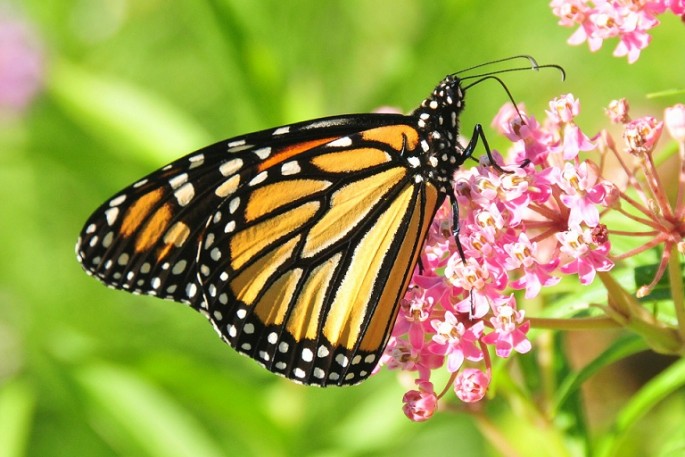This time of year heralds the iconic monarch butterfly's migration to Mexico for the winter, where the rust and orange beauties will make its voyage for more than 2,000 miles south.
In Fort Wayne, Indiana, the monarch butterflies will make a pit stop for their yearly migration. According to the director of preserves and programs of the Little River Wetlands Project, Betsy Yankowiak, the butterflies will grace the preserves with their fluttering presence as the beloved, fragile creatures were welcomed by more than 1,200 visitors at the fifth annual Monarch Festival located at the Eagle Marsh Nature Preserve.
The 716 acre park will expect hundreds of butterflies as Yankowiak and volunteers prepared the reserve for their arrival, just adjacent to Fox Island County Park. Eagle Marsh blooms with indigenous flowers and plants such as golden sawtooth sunflowers that the butterflies prefer that also lined the demonstration area last Sunday.
During the festival, volunteers were excited to give away 500 milkweed plants where they also planted the same amount in the marsh where the butterflies will come to rest and feed, approved as a Monarch Waystation by the Monarch Watch.
The monarch butterfly species is an important pollinator, crucial to many ecosystems in North America and is unfortunately an endangered species. Based on data and statistics from the Little River Wetlands Project, in 2003, the butterfly population covered 27 acres of Mexico, however, after a decade, the number dwindled down to 1.65 acres.
Biologists and environmentalists believe that disappearing milkweed plants are the root of this problem. According to Martha Ferguson who is the owner of Riverview Nursery in Spencerville, milkweed is the only larval host of the monarch butterfly, who sells milkweed and other native plants and bushes.
For example, the commonly seen paw paw tree that thrives on wet soils and river banks is a favorite dwelling place of zebra swallowtail and paw paw sphinx moths. However, an invasive bush species called the butterfly bush is mistakenly marketed to attract pollinators. Ferguson says that no native butterfly of any species will lay their eggs on it.
To alleviate this population problem, the National Fish & Wildlife Service encourages butterfly lovers to plant their own milkweed gardens. According to wildlife biologist Karen Viste-Sparkman from the Neal Smith Refuge in Iowa, every little bit of effort helps, and it does not take an enormous amount of plants in any one area to help the monarch butterflies, especially during migration season.



























